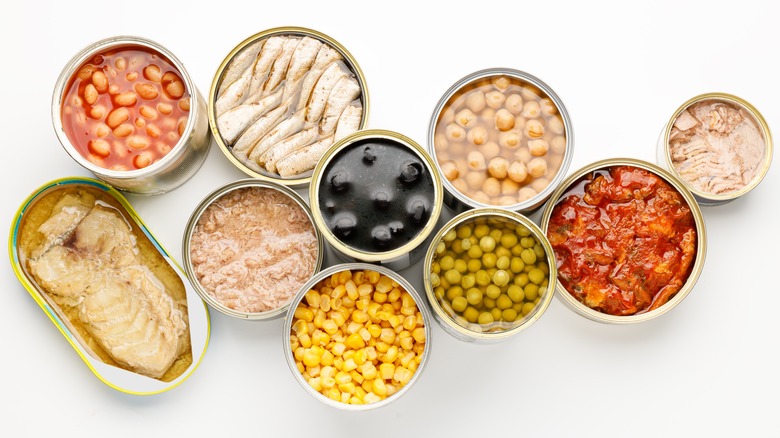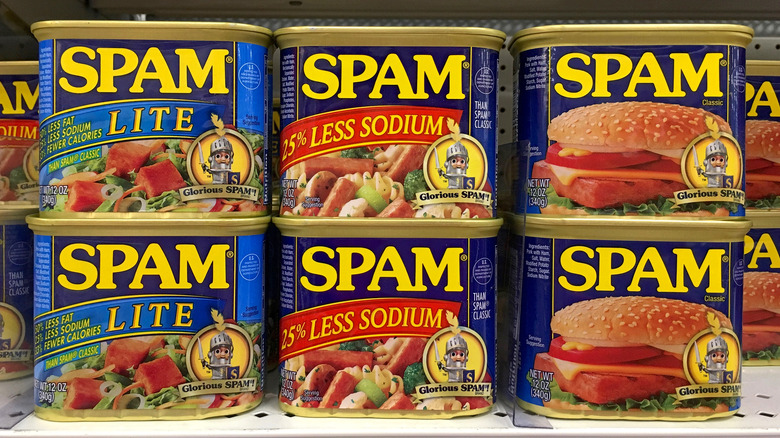Are All Canned Foods High In Sodium?
Canned goods are great for their convenience and long shelf life, but many are also high in sodium. Packaged soups, for instance, were found by The American Journal of Clinical Nutrition to average 700 milligrams of sodium per cup in 2009. That is about 30% of the maximum daily sodium intake the U.S. Food and Drug Administration recommends for adults. Keep in mind that we're not even addressing the specific issue of adding salt to food.
Sodium and salt are not the same thing, despite often being discussed interchangeably. Sodium is a chemical element that can be naturally present in food or, in the case of canned goods, added individually, while salt is the chemical compound sodium chloride, aka crystalized table salt. Your body needs the element sodium to function properly, but too much can lead to health problems like high blood pressure. However, you can cut back on the amount you're getting through canned goods by purchasing versions labeled "low sodium," "very low sodium," or "sodium-free." These claims are all regulated by the FDA and refer to canned items with 140, 35, and 5 milligrams of sodium per serving, respectively.
Still, you'll want to read the labels and nutrition facts carefully when picking from the various low-sodium canned goods options, as some labels aren't as promising as they may seem. "Reduced sodium," for example, only requires a minimum 25% reduction per serving, which ultimately isn't very much when a cup of soup packs 700 milligrams of the stuff.
Do low-sodium canned goods have a shorter shelf life?
Sodium is commonly used to preserve food, so you may be curious if a lower sodium content means that canned goods won't last as long in your pantry. However, we are happy to report that this isn't the case. As it turns out, the canning process gives tinned foods like tuna fish and green beans their longevity. Sodium is unnecessary in that regard but can help enhance flavor. Therefore, the shelf life of these low-sodium and sodium-free products should be just as long as their full-sodium counterparts — though this does beg another question: Do low-sodium canned goods taste different?
The answer to this isn't quite as cut-and-dry. A low- or no-sodium label shouldn't have too much of an effect on the flavor of canned fruit or veggies, though some may find that the difference between regular and low-sodium soup is night and day. Don't worry — your taste buds will eventually adjust to the liquid low-salt meal. In the meantime, however, you can try doctoring it up with fresh herbs, spices, or Andrew Zimmern's secret ingredient for tasty, low-sodium food: MSG.
You don't need to throw away all of your full-sodium canned goods in favor of the low-sodium varieties either. By rinsing your canned vegetables, beans, fruits, and fish before consumption, you can reduce their sodium levels by as much as 80%.

